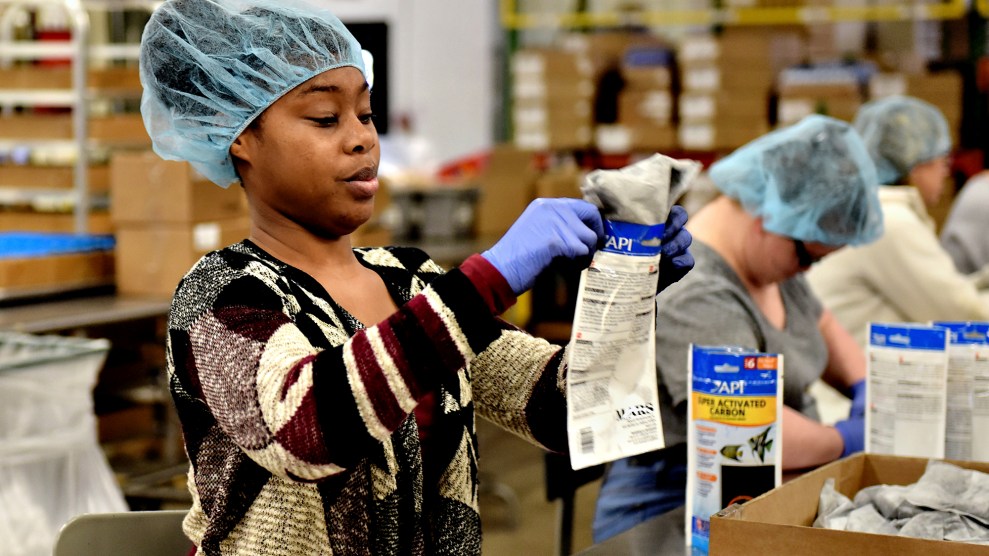News reports are full of Obama’s determination to advance health care reform, regardless of Republican resistance. But developments taking place behind the public debate tell quite another story, and show the usual suspects–the drug companies and the insurance industry–hard at work to advance their own interests.
Consider, for example, last week’s AARP study showing that Big Pharma has been increasing the prices of the brand name drugs most often prescribed to older Americans at well beyond the rate of inflation. According to an AP account of the report, AARP ”said that prices manufacturers charged for the most widely used brand name drugs rose 8.7 percent in 2008, higher than in years past. The general inflation rate in 2008 was 3.8 percent.”
Perhaps the drug companies are acting out of sheer greed in a deep recession. Perhaps they know that patents are running out, and want to make as much as possible before the plug gets pulled. Or perhaps the drugsters sense impending change and want to rake in the cash before Congress pulls the plug.
In any case, they offer, as some sort of consolation prize, the fact that generic drug prices are falling. Of course, thanks to the generous patents handed out to Big Pharma even for lifesaving drugs, generics do not exist for many prescriptions. And there is another problem: generic equivalents sometimes turn out not to be equivalent, after all. An increasing body of evidence shows that small differences in their chemical makeup, which are allowed by law, can affect the way they work. So many patients are left with no other choice than to shell out for the brand names.
A second troubling development in the area of prescription drugs arises out of the continuing scams run by private Medicare Advantage plans. Now the pharmacists are getting cut into the act. By hooking up with insurance companies running Medicare Advantage plans, pharmacists get to charge consultant fees for telling people which drugs to take, and how, and when, and even for “making recommendations to physicians”–especially if the drugs they recommend happen to be cheaper.
The Kaiser Daily Health Policy Report, citing reporting by the Tennessean newspaper, notes that “pharmacies’ income typically comes from adding an additional fee to the price of medications. However, as profit margins decline, consultations are becoming another way for pharmacists to bring in additional revenue.” Here’s how it works, according to rules established by the Center for Medicare Services (CMS), the government agency that oversees the program:
Under existing CMS guidelines, insurers that offer Medicare Advantage plans are required to pay pharmacies for the meetings with patients, during which they discuss the importance of taking the proper medications at the appropriate times….Some pharmacists now earn up to $160 for a one-hour meeting with patients….
In 2010, new CMS guidelines will broaden the pharmacy consultation benefit to more MA beneficiaries. Under the revised guidelines, MA plans will be required to review their member rolls on a quarterly basis to identify eligible members for the program. In addition, health plans will be prohibited from restricting access to the benefit to members with a high number of chronic health conditions and medications….
The idea of the friendly neighborhood druggist watching out for local elders might seem appealing on the surface. But these days, of course, its mostly faceless chain stores that provide medications to Medicare recipients. And these drug stores are being given something like a backdoor license to practice medicine, doing work that doctors ought to be doing–at a much cheaper price.
Controlling cost, after all, is what it’s all about, rather than the benign task of ensuring that oldsters ”take the proper medications at the appropriate times.” As Kaiser reports, “Pharmacists will be paid $50 to review a beneficiary’s medications and make recommendations to their physician. Pharmacists will receive additional payments if they recommend a less-costly, therapeutic equivalent to the patient.”
It occurs to me that these two bits of news show the pharmaceutical industry and insurance industry working at cross purposes: While the drug companies are doing everything they can to profit off of costly brand name drugs, the insurance companies are coming up with new strategies for moving patients to less expensive alternatives. Maybe we should just step back and let the two industries fight each other to the death, to the vast benefit of the American health care system.












